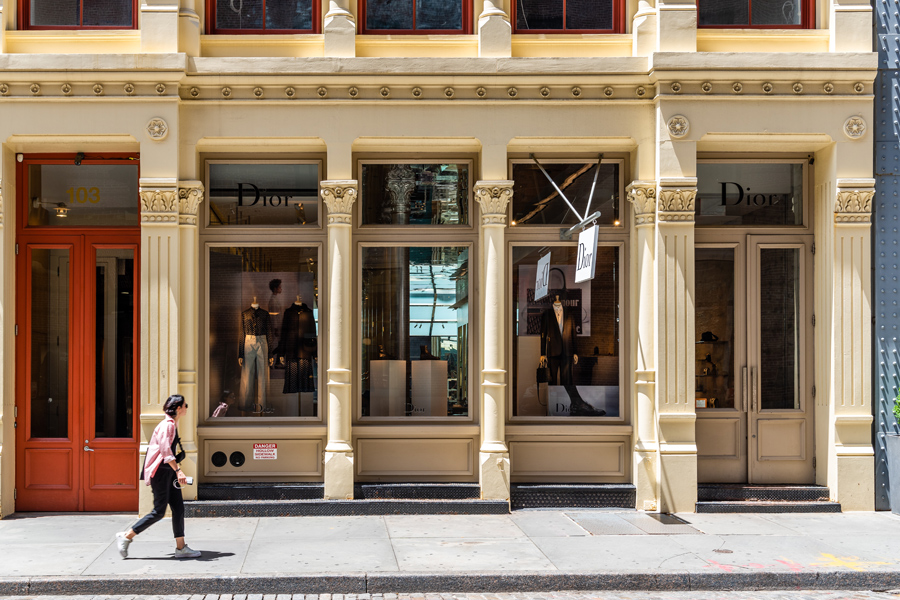Capitalizing on physical locations is a huge opportunity for DTC brands, but you can’t just throw a dart at a map and expect results. As DTCs open physical locations around the country, they can ensure a bigger likelihood of both pulling in existing online customers and attracting new customers with a comprehensive location strategy – and that strategy must adapt to the changing retail consumer, who shops closer to home and expects more from brands to earn loyalty.
The Cost of Credibility
DTCs were leaning into the retail landscape before the pandemic. Not only is the cost of customer acquisition too high to be sustainable for a digital-only brand, but the ability to build trust and customer loyalty to retain customers is challenging.
“Roughly one-third (34%) of US consumers surveyed stated they don’t trust retailers with just an online presence.” – Morning Consult
“Consumers inherently trust brands that have a physical presence over those based solely online. In a recent report by global data intelligence company Morning Consult, roughly one-third (34%) of US consumers surveyed stated they don’t trust retailers with just an online presence. Meanwhile, 68% trusted retailers with just a physical store, and 73% trusted retailers with both a physical and online store.” – Chute Gerdeman
A Location Strategy Shift
According to data from Yelp, new business openings increased 14% in year two of the pandemic. However, where those businesses are opening is changing. “Boston, Seattle, Los Angeles, and New York City saw the largest decreases in new business openings during Delta and Omicron variant waves. Meanwhile, Atlanta, Dallas, and Detroit bucked the trend with an increase in the number of new business openings during the arrival of the Delta and Omicron variants.”
Successful DTCs are shifting away from large hubs like New York City. DTCs are choosing locations where the cost of doing business is more manageable – locations like Florida, Texas, and Tennessee. They’re also following their customers. According to Modern Retail, the pandemic-motivated exodus from big cities has spurred DTCs to follow them to mid-sized cities like Austin and Dallas. Even DTCs locating in large cities like New York City are straying away from 5th Avenue and instead opening shops in places like Dumbo (Brooklyn) and the Upper East Side.

Today’s digitally native brands don’t mind a little competition, so don’t be surprised when you see several DTC brands clustered in the same location. High traffic and concentration outweigh any negative. The key is really positioning yourself where the consumer can do more than one thing – where they can cross-shop. That’s why top retail destinations like Easton are appealing.
The Devil Is In the Details
It’s critical to start with customer data when developing a location strategy. Luckily, DTC brands often have a more intimate understanding of their digital customer, and that insight can provide a lot to leverage. However, what’s important to remember is that the online customer isn’t always an exact match to the physical customer. Having a physical space creates new awareness, so being able to understand, recognize, and accept there might be a shift is an important consideration.

Using data to identify key retail location opportunities, DTC stores need to go where their customers are. Brands tend to think of New York first, but it really limits your capability to test, measure, and learn. With a high tourist and commuter mix, the metropolis is atypical to other major markets, limiting planning for stores two, three, and four.
Combine all that with its lack of affordability–even with the lowered rents and flexible leases we’re seeing–you’re paying a lot for a location, which means potentially less investment available for design. That’s why we’re seeing more DTCs focus on launching their first brick and mortar in places like Nashville and Austin- they’re more affordable, have a better customer mix to help predict and inform future stores, and give you more to invest in design so that you can get it right.
Want to learn more about implementing a data-driven location strategy? Explore our proprietary platform, ASGedge, where we combine tailored real estate data with industry expertise to inform confident retail decisions.




